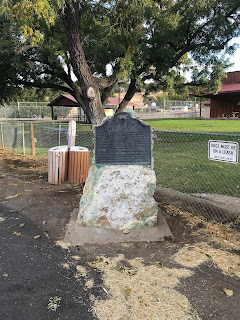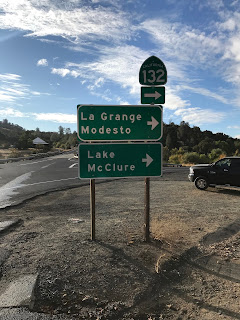Priest-Coulterville Road is an approximately eight-mile roadway which connects the outskirts of Coulterville of Mariposa County to Priest Station of Tuolumne County. Priest-Coulterville Road is one of the oldest highway corridors in California as it can be traced back to the 1850s during the of the California Gold Rush. Below Priest-Coulterville Road can be observed connecting Coulterville to the Big Oak Flat area on the 1882 Bancroft's Map of California & Nevada.
Part 1; the history of Priest-Coulterville Road
Both Coulterville and Priest Station are communities which were settled in the Sierra Nevada Mountains during the early phases of the California Gold Rush. Early access to Big Oak Flat and Garotte in Tulare County was initially difficult as only a haggard foot trail on the southern flank of Grizzly Gulch existed in the early California Gold Rush. Travelers ascending the Grizzly Gulch Trail would pass by what ultimately become Priest Station which had been established in 1849 as a mining supply store. Coulterville of Mariposa County was founded in 1850 along Maxwell Creek and is named after George Coulter. Originally Coulterville was called Maxwell Creek, but it the community's name was changed by 1853.
The corridor of Priest-Coulterville Road was heavily prospected as part of the Big Oak Flat Mining District during the early California Gold Rush. The Grant Group Mine, Contact Gold Mine, Raggio Claim, Two Brothers Mine, Jack Lode and Penon Blanco Mine are all listed as known claims on the corridor of Priest-Coulterville Road on thediggings.com.The 1955 article titled "The Big Oak Flat Road" by Irene D. Paden and Margaret E. Schlichtmann contains an 1859 reference to Priest-Coulterville Road and the mining camp known as Bone Yard:
"Just one mile from Smith’s a dirt road leads north to the Lumsden bridge over the main Tuolumne River and goes on to the Jawbone country and to Cherry Creek Pack Station. The original covered bridge at this point, as well as several other bridges, trails and flumes, were constructed by James Lumsden and his brother, David. They were the sons of James and Clarissa Lumsden who settled in 1859 at Boneyard. It was never a village—just a small section on the connecting road between Priest’s Station and Coulterville. James Lumsden, the younger, lived in Groveland for nearly sixty years and raised eight sons and a daughter. The brothers are best remembered as the pair who carved out the tunnel tree in Tuolumne Grove in 1878."
The above passage seems to suggest the corridor of Priest-Coulterville Road likely was a pack trail during the early California Gold Rush which was built up to a public roadway franchise toll road during the 1850s. Priest Coulterville Road would have provided connections with other notable roads in the areas such as the 1859 Priest Grade Road, Wards Ferry Road, Big Oak Flat Road and Coulterville Road. Priest-Coulterville Road can be observed connecting Coulterville to the Big Oak Flat area on the 1882 Bancroft's Map of California & Nevada.
County Route J132 on Main Street is co-signed as the Historic John Muir Route. Traffic on County Route J132 eastbound is advised that Coulterville is considered a Historic Town.
County Route J132 eastbound traverses downtown Coulterville and splits from Main Street onto Greeley Hill Road at Chinatown Main Street.
Main Street continues into the former Chinatown District of Coulterville. Coulterville much like many of the Gold Rush Era communities relied heavily on Chinese mining labor and was segregated. Today there is only one building in Coulterville's Chinatown which shows evidence of what it once was.
County Route J132 on Greeley Hill Road continues east of Coulterville it passes by Dogtown Road. Dogtown Road was part of an alternate route for stages on the Coulterville Road which passed by; the ghost town of Dogtown, Date Flat, and the Red Cloud Mine.
Traffic on County Route J132 eastbound on Greeley Hill Road is advised of 8 miles of curves ahead. The next major junction on J132 eastbound is at Priest-Coulterville Road.
Priest-Coulterville Road north from County Route J132 to the Tuolumne County line is largely a single paved lane.































































































Comments